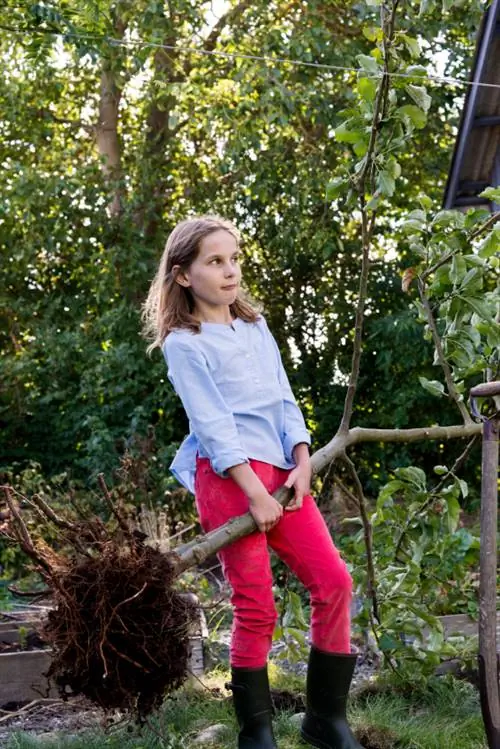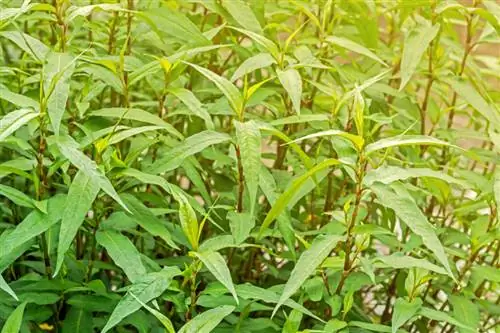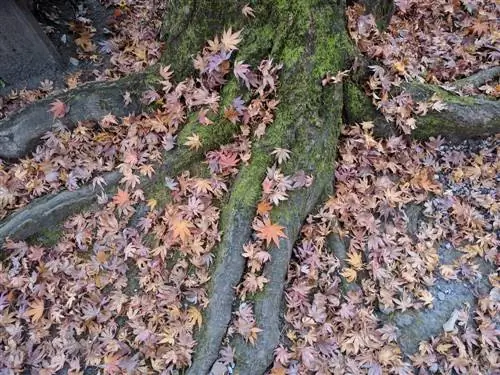- Author admin [email protected].
- Public 2023-12-16 16:46.
- Last modified 2025-01-23 11:21.
Birches are extremely frugal trees. They just value lots of light and enough water. If you want to enrich your property with a picturesque specimen of the Betula genus, you don't have to consider many factors - but these are all the more strict. This also includes the root type, because the birch has shallow roots. You can find out what consequences this has for cultivation here.

What does it mean when a birch tree has shallow roots?
Birches are shallow-rooted trees that primarily absorb their nutrients from surface water. This causes them to compete with neighboring plants that also have shallow root systems. When planning your garden, consider sufficient spacing and fall protection for optimal growth.
Birch as a shallow root - that's what the root type means
If you like gardening, you will mainly have to deal with three types of roots, namely:
- Deeproots
- Heartroots
- Shallow-rooted
Birches come in more than 40 species, but are all shallow-rooted. These absorb their nutrients mainly through the surface water that seeps into the ground. The roots form a ring around the birch tree. Therefore, they enter into vigorous competition with all nearby plants that also support themselves via a shallow root system.
Impact on garden planning
When planting a birch tree in the garden, you should definitely pay attention to its root type. Because this knowledge shows what the location must be like. The most important thing is that you should allow enough distance from existing plants. Alternatively, it is possible to plant birch trees exclusively in an environment with deep roots. These two types can thrive in peaceful coexistence without competition.
Danger of falling with shallow roots
Unlike deep-rooted birch trees, as shallow-rooted trees they are particularly at risk from wind and storms. It is therefore important to secure young growing specimens with a stake if necessary. Overall, the environment should be prepared for the risk of falling, which is best achieved with careful planning before you plant the birch tree. If possible, place your new birch tree away from parking lots, playgrounds, power lines and areas where people or objects could be harmed if the tree falls.
But don't worry: the soil conditions would have to be relatively bad so that the roots can't find a foothold. If the birch lives in a suitable location, it is also possible for it to develop a good root system as a shallow-rooted tree.
You can also prevent the dreaded wind-throw damage to shallow-rooted trees by not planting the trees too closely. It's easy to see that the more the tree can spread, the more stability it creates.






